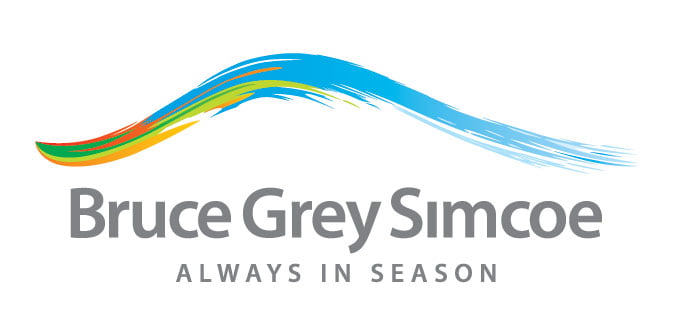
Coming up with an event budget isn’t the most fun part of the planning process, but without a thorough understanding of every dollar you spend, you’re setting yourself up to overspend. Blowing your budget on swanky cocktails or headlining entertainment might seem like a good idea, but if you don’t have any budget left to promote your event, you won’t be able to attract any attendees to sip those drinks or enjoy the entertainment.
Tracking your pennies is critical to improving your event’s return on investment and managing your total cost, but you don’t have to be a math whiz to keep your event planning budget on track. Here’s your ultimate guide to creating and managing an event budget.
Phase 1: Clarify your event budget strategy
Before you dive into your actual budget planning for event management, it’s important to take a step back and think critically about what you’ll be spending your money on. We’ve rounded up some of the best ways to use data that will help guide your budgeting process.
1. Reference historical data
Unless your event is in its first year, you already know what you spent your budget on in years past. Begin by identifying line items that you overspent or under-spent on and see if they’re the same or different from year to year.
Once you’ve pinpointed specific things that you tend to overspend on, it’ll give you a better picture of what needs more budget, making it easier to be accurate earlier on in your process instead of repeating past mistakes. In addition, you can run your preliminary budget past your clients and your boss for approval if necessary. That way, you’ve already got a working doc in place to update as you move forward.
2. Consider trends
If you and your team are facing budget constraints, you’re not alone. In a past survey of event creators, 9 out of 10 said their budget is insufficient, and 55% said their budget would stay the same in the coming year. So where does the money go? For the event creators surveyed, the top costs were:
- Marketing and promotion: 43%
- Speakers and talent: 32%
- Printed materials: 29%
- Venues: 18%
If the breakdown is similar for your event, then check out the section below on event marketing for some ideas on how you can trim your marketing spend, no matter the size of your team or event.
3. Set your goals
Once you’ve identified areas to tighten up your spending, you can set specific goals. Whether you want to increase the amount of money you receive from sponsors or make your money go further without using up your contingency fund, setting goals will keep you focused.
Set targets early on, including how many tickets you want to sell and how much sponsorship revenue you want to generate. Doing so will keep your income on track for your spending.
4. Get buy-in from all departments and stakeholders
The sooner you can get the green light from your stakeholders to start planning, the better. A rough budget can help you get an estimated figure that you can revise as you go along.
Tip: Always get a minimum of three quotes for anything, even if you have a vendor you like working with. Chances are good that you’ll find someone else who will go lower and your favorite vendor will match their price, or throw in something else like free parking for event staff.
Phase 2: Map out specific expenses in your event budget
Now that you know your areas of focus, it’s time to list all the line items to track in your budgeting template. These will include particulars like rental cost, lighting equipment, and more.
Don’t have an event budget sample? See Phase 3 below for inspiration.
5. Map out all your expenses so you can make informed decisions
Defining the focus areas of your event can help you prioritize your spending and invest in what really matters. Once you have your overarching categories defined, you can start to drill down and fill in the costs.
Be as specific as you can with line items on a budget. Don’t be tempted to lump things like “food and alcohol” together, as you may be sourcing them from different vendors. If you’re comfortable with them, use formulas to see profit or loss in real time.
Tip: Typical budgets have two columns for cost — projected and actual. The better your research, the more closely these two columns will match.
6. Incorporate your experiential costs
Not sure what costs to list for your event experience? The following are the most common ones to consider when putting together your budget. You’ll want to list out the different line items for each major cost, so you can keep track of the details.
- Venue
- Staffing
- A/V equipment
- Décor
- Programming (speakers or performers)
- Signage and event branding
- Attendee experiences
- Travel
Some of your line items may differ depending on whether your event is held in person or virtually. For fully virtual events you will save on costs like the venue, décor, and signage, but you may need to budget more for livestreaming equipment or mailing swag directly to attendees.
Tip: Use different colors to shade your spreadsheet so you can see at a glance which line items belong in which categories.
7. Include your technology costs
Investing in the right technology can make a huge difference in your ability to maximize your event budget. You need to choose a ticketing partner who can help you provide a delightful registration process and a mobile event app that people actually use.
These are the three most common technology costs to consider including in your event budget, depending on whether they apply to your event or not:
- Event app
- Ticketing partner
- Livestreaming
For a virtual, livestreamed event, the technology you use is particularly important. You’ll want to ensure that you have a strong internet connection, proper video equipment, and potentially even a sound engineer.
Tip: Choose a ticketing or registration partner that lets you pass along fees to your attendees, so you don’t have to pay anything out of pocket.
8. Estimate promotional costs
There are many ways to save money on your promotion costs. But you have to start by understanding how effective your current promotional strategy is. Data plays a huge part in that.
Look closely at your marketing spend and how many ticket sales come from each effort. Then invest your budget in the channels that yield the highest return on investment and stop doing anything that doesn’t produce a return. If your team is small, maximize your marketing budget by investing in the right marketing tools and technology for your event. Here are common areas where you can trim down your spending:
- Social media: Use one of these free tools to automate your posts without spending more.
- SEO: Use a ticketing partner with industry-leading domain authority so your events have a better shot at ranking in Google, without any more investment from your team.
- Streamline your checkout process: Small tweaks to your purchase process can drastically increase your sales, without any other changes.
Tip: It costs six to seven times more to acquire a new attendee than it does to retain an existing one. Are you doing enough to nurture past attendees in your event marketing?
Phase 3: Master event budget best practices
Even if you are somebody who enjoys tracking every receipt, the following strategies can help you keep everything in check and get more mileage from your budget.
9. Consider event ROI
Ultimately, your budget is a fundamental part of calculating your return on investment. Your budget can determine your event’s total cost. Then, use it as a a starting point for the years to come so you can meet your goals and grow your profit margin.
Not sure how to calculate your event’s ROI? Use this simple equation:
[(Total Sales Revenue – Total Cost of the Event) ÷ Total Cost of the Event ] X 100 = ROI
If your ROI is 1X, it means you broke even. Most events aim for an ROI of at least 2-3X.
10. Leave an emergency fund
You never know what’s going to happen in the days leading up to an event. Working some leeway into your budget gives you enough breathing room to absorb unexpected costs, in case you might need to add to your A/V order or a speaker’s fees turn out to be higher than expected. This helps minimize stress and ensures everything goes more smoothly.
Tip: Depending on your event type, plan on having a contingency figure between 5% and 25%. Remember that your buffer will change throughout the lifecycle of your event.
11. Avoid common mistakes
A common event budget mistake is ignoring the budget as you plan. Spending a little bit of time on your budget every day (at least 10 minutes) will help you stay on top of new developments in real time, rather than letting things pile up in a heap. Event technology, like an app you and your team can use to submit expenses, can help make sure your budget is populated with the most recent data.
Another mistake to avoid is not exploring all the different avenues of revenue that can increase your budget. One-third of event professionals generate the majority of their revenue from sources other than ticket sales. The most common sources include:
- Sponsors
- Swag
- Merchandise
Tip: Don’t just offer your sponsors the generic bronze/silver/gold package. Really work together to find out what your sponsor wants to achieve and collaborate with them to provide a valuable partnership.
12. Get creative
Still not getting your budget to budge? It’s time to think creatively about how you can market your event and deliver a great experience for attendees using the event budget you do have. You can’t eliminate marketing costs entirely, but you can make savvy decisions on where to offset it.
For example, get scrappy by:
- Promoting with the help of influencers
- Using free technology tools
- Outsourcing what you can to interns or volunteers
- Partnering with brands and local businesses
Phase 4: Craft your event budget template
If you’re starting from scratch creating a budget for your event, an empty spreadsheet can seem quite daunting. And more often than not, trying to fit your event’s finances into an outdated budget template you pulled from the internet makes your life more complicated — not less.
Luckily, with just a little work up front, it’s quite easy to create your own event budget template that will serve you now and in the years to come. All you have to do is ask yourself five questions:
- What are you budgeting for? Specify the needs of your event and break out your major spending categories.
- What are your exact costs? Walk yourself through the lifecycle of your event and list the line items you’ll need under each category.
- What’s your projected event revenue? Estimate how much you will make, including revenue from tickets, sponsors, vendors, and anything else coming in.
- Are there unknown variables to work into your event budget template? This is your contingency plan. If you end up not needing it, even better — that’s a buffer in your bank that can go towards your next event.
- Could you make your budgeting easier with technology? Apps and other technology tools help automate budgeting tasks make the job easier and give you a more accurate financial picture.
Tip: Spreadsheets not your jam? There are plenty of simple tools to get you started, like Google Sheets, which does not require you to download software onto your desktop.


